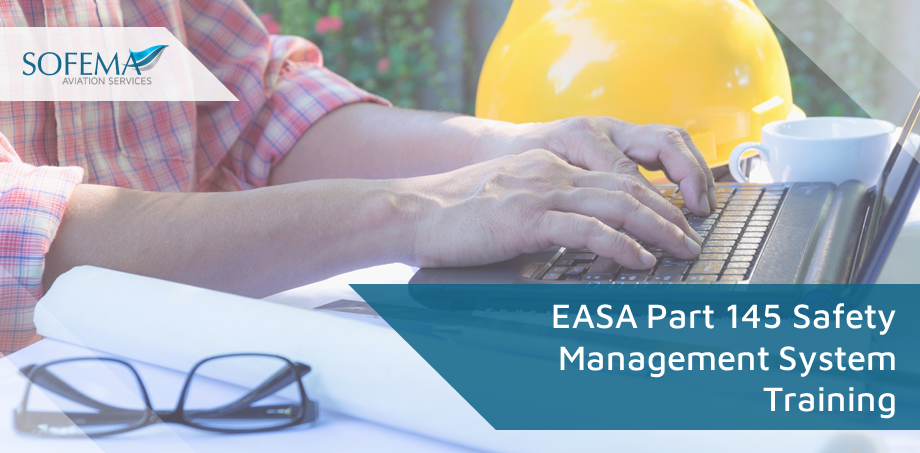Sofema Aviation Services (SAS) www.sasssofia.com considers the critical aspects of EASA Part 145 Safety Management System Training.
Introduction – Importance of SMS Training
Safety Management System training is fundamental in aviation maintenance because it underpins the organization’s safety culture and operational integrity.
- The basic concept of SMS training is to educate and reinforce the importance of safety and risk management among all employees, from maintenance technicians to management.
- Statistics and case studies demonstrating significant improvements in safety outcomes due to practical SMS implementations support the rationale for SMS training.
Role of Technology and Training
Advancements in technology and training methodologies have significantly contributed to SMS’s efficacy. Modern training tools like virtual reality, e-learning platforms, and simulation-based training can enhance understanding and retention.
- Additionally, integrating competency management ensures that personnel are trained and competent to perform safety-related tasks effectively.
An Understanding of “Our” SMS System within “Our” Organization
Detailed System Knowledge
Employees must understand the theoretical framework of SMS and how it is specifically implemented and functions within their organization. This involves:
- Policy and Objectives: Employees must be familiar with the organization’s safety policies and objectives and how these align with regulatory requirements and standards.
- Risk Management: Understanding the processes for hazard identification, risk assessment, and mitigation. Employees should know how to report safety issues without fear of reprisal and how these reports are handled.
- Safety Assurance: Training should cover how the organization monitors and measures safety performance, including safety audits and investigations.
- Safety Promotion: Highlighting the tools and activities used to promote safety, such as safety communication, safety days, and ongoing training.
- Engagement and Culture: Detailing how the organization fosters a positive safety culture where safety is everyone’s responsibility. This might include leadership’s role in safety, feedback mechanisms, and how safety decisions impact operational practices.
Engagement with the SMS
- For the training to be practical, it must convey information and engage the employees. This can be achieved through interactive sessions, real-life case studies, and group discussions that encourage active participation.
- Employees should leave the training with a clear understanding of how they contribute to safety and how critical their role is within the SMS framework.
Continuous Improvement
- The effectiveness of SMS training should be continuously evaluated and improved based on feedback, changes in technology, and evolving best practices in safety management.
- This ensures that the training remains relevant, effective, and aligned with the organization’s safety objectives and the regulatory environment.
Next Steps
Follow this link to our Library to find & download related documents for Free.
Sofema Aviation Services (SAS) www.sassofia.com provides classroom & webinar training & Sofema Online (SOL) www.sofemaonline.com provides online training – please see the websites for details of more than 1000 courses or email team@sassofia.com
Tags:
EASA Part 145, Safety Assurance, Safety Management System training, Training, Safety Culture, SMS, SAS blogs, Safety promotion, Technology, Policy and Objectives





